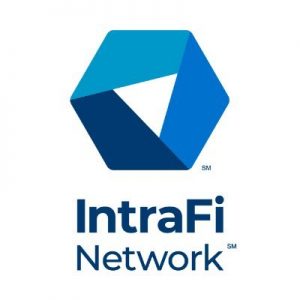Despite a number of headwinds facing banks this year, including high inflation and an uncertain economic environment, one of the top concerns for community banks is retaining talent. Around 70% of banking leaders said retention was a challenge, as was maintaining “a large enough workforce to do work,” according to a recent survey from Arizent, the publisher of American Banker.
Employees are quitting for several reasons, ranging from burnout to a desire for more flexibility to an interest in doing meaningful work. They also have more options and better career prospects. Before the pandemic, bankers were predominantly limited to local opportunities. Today, they can work virtually for institutions located anywhere.
Even with a recession looming, leaders who don’t adapt to these new dynamics risk seeing their best people leave. According to the results of our most recent quarterly survey, 66% of bank executives have increased compensation to retain (and attract) qualified employees, but higher salaries and performance-based pay may not be enough to keep people around. Employees also want fulfilling roles and growth opportunities.
Below are some ideas to help prevent staff departures.
Create a mentoring program
With employees increasingly focused on well-being and self-improvement, and since a lack of interpersonal connections appears to be one of the main reasons people quit their jobs, mentoring programs can help retain staff.
“Rapport is what makes mentoring truly transformative and more than just an organizational responsibility,” CEOs Marianna Tu and Michael Li wrote in a recent article for Harvard Business Review. “The quality of this human connection is critical to retaining employees, especially those who are underrepresented in your company or industry.”
Mentoring programs can benefit everyone. Junior-level bankers develop new skills and perspectives, learn how to navigate organizational politics, and expand their professional networks, while senior bankers gain new perspectives and give back to their organizations
and industries.
If you’re worried about the efficacy of a mentoring program in a remote environment, don’t be. It may seem counterintuitive, but virtual mentoring has several distinct advantages over in-person mentoring, such as increased flexibility and myriad technology applications.
In fact, not launching a mentoring program might be a mistake. “During the COVID-19 pandemic, our personal and professional worlds have steadily intruded into one another,” Tu and Li wrote. “Companies who embrace that reality will tend to keep their best people while others lose great talent.”
And banks don’t have to spend a lot to get mentoring programs up and running; all their prospective mentors are already in-house.
Consider an ESOP
Employee stock ownership plans (ESOPs) aren’t for every bank, and instituting one obviously isn’t a decision to take lightly. That said, ESOPs can foster a culture where employees feel a greater sense of belonging. Employees who feel taken care of are typically more loyal to their employers, which means they’re more likely to stick around and tend to go above and beyond for customers.
In addition, ESOPs can help banks increase productivity, save on taxes, and attract talent, among other benefits. One bank CEO with an ESOP claims the plan has made a tremendous difference to employees and their families.
“We’ve got a number of people who are second or third-generation who have worked here,” he said during a recent episode of Banking with Interest. “To me, that’s very telling. There’s no higher compliment than someone who recommended to their child that they should work for us because they’ve had such a good career here.”
Keep an eye on inefficiencies
Today, most banks are operating in hybrid environments. According to Bank Director’s 2022 risk survey, 82% of banks have employees that work remotely at least part of the week.
But for all the flexibility and convenience of hybrid work, there are downsides, too. Despite an abundance of technologies that facilitate remote collaboration, coordinating in-person and online cohorts simultaneously can be time-consuming.
To adapt, banks should consider looking for ways to increase efficiency. One way could be by streamlining meetings. Employees hated long meetings before the pandemic, and whether they are back in the office or still meeting over Zoom, they have even less patience now.
Some quick tips: only invite people to meetings who absolutely need to be there; craft and distribute an agenda in advance; and encourage everyone to participate while not letting anyone speak too long.
Or, consider avoiding hybrid meetings altogether. “Try to be either fully on or fully off,” said Dimitrios Lagias, managing director at Boston Consulting Group, at a recent Consumer Bankers Association conference. “Start planning as teams rather than individuals.”
Of course, the challenges posed by hybrid environments are bigger than meetings. For instance, managers of hybrid teams will require new skill sets, and banks may have to revamp their training programs accordingly.
Use technology to empower workers
Much of the discussion on the benefits of workplace technologies revolves around automating tasks or controlling how employees work, for instance, by monitoring keyboard strokes or messaging channels. Such technologies were designed to boost productivity, but for obvious reasons, they were never popular among workers.
With so much burnout in the workforce today, the mere mention of a surveillance application or monitoring software could trigger a dash for the exits. But what if banks used technology to give employees more autonomy, not less?
In industries such as healthcare, consumer electronics, and fast food, organizations are already using technology to give workers more input into strategy and automate middle-management functions.
Banks are more hierarchical than other types of organizations by necessity, given their importance to the economy and the regulatory requirements they face. But that doesn’t mean opportunities to reduce bureaucracy don’t exist.
A new era demands a different approach
Addressing challenges posed by the Great Resignation won’t be easy. Beyond obvious measures such as listening to employees, offering more accommodating work arrangements, and resisting the impulse to make top-down decisions without bottom-up input, community banks will likely need to change their employee value propositions to keep folks around.
Some of the measures listed above are costlier and more difficult to implement than others, and not all of them will work for every institution. But one or more might, and considering different options could inspire more ideas.
Either way, one thing’s certain: The work landscape has changed dramatically due to the pandemic and attempting to return to the status quo won’t work.
IntraFi is the #1 provider of deposit products to U.S. financial institutions, a leading provider of overnight and term funding solutions, and one of the nation’s best places to work. The company’s network of nearly 3,000 banks – the largest of its kind – brings scale, stability, and the confidence of working with a category leader. Its members include most of the nation’s community banks, minority depository institutions, and community development financial institutions.







